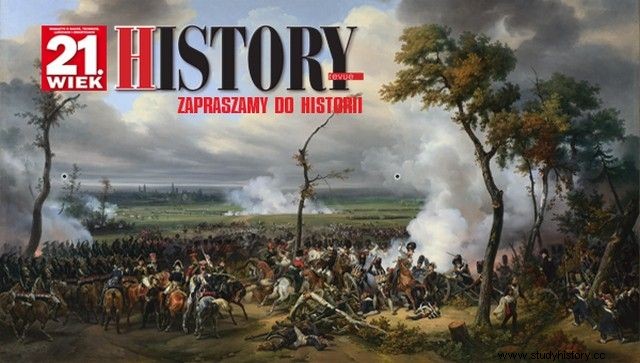Villagers massively kidnapped from their estates, shackled in collars, imprisoned in special castles-camps, driven to slave fairs - this was the Polish reality in the 10th century.
Did the Piasts build your country on the basis of human trade? This shocking concept of the emergence of Poland has more and more supporters among specialists. They have been arguing for a long time about the causes of the sudden emergence and rapid expansion of the Gniezno state in the 10th century Greater Poland.
Recently, archaeologists and historians have paid special attention to the great number of dirhams, silver Arabian coins, in our lands. More than 1,000 dirham treasures, with a total of around a million coins, have been discovered across northeastern Europe to date. The vicinity of Kiev and Greater Poland are among the regions with the largest number of these finds. The question is:where did they come from in such quantities?
According to Dr. Marek Jankowiak, a historian from the University of Oxford, dirhams in Polish lands could only come from one source:the slave trade. - It was the only Polish product that could be of interest to Arab buyers. They were not interested in Baltic amber at all, and preferred to import their furs from Rus - emphasizes the historian specializing in research on the trade of the time.
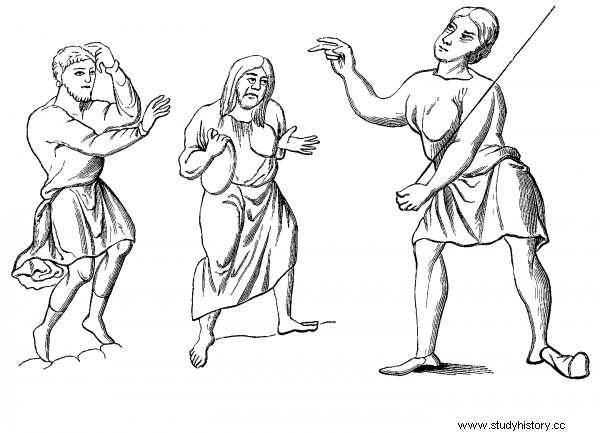
In the 10th and early 11th centuries, Slavic slaves swam into the Middle East and the Caliphate of Córdoba in a broad stream.
Spain, under the rule of the Arab Umayyads in the 10th century, experienced an economic boom. It was a great market for Slavic slaves who were wanted to work in the land, in the army and in the domestic service. However, thousands of chained Slavs were also driven to the Middle East. "It's a real locust," reported one Arab writer when describing the slave market in Baghdad.
Wielkopolska demographic revolution
The supply of the goods sought was provided by rogue Slavic states that regularly waged wars, organizing hunts for people. One of such countries was the emerging Piast Poland. In the first decades of the 10th century, small Greater Poland settlements were completely destroyed:in Samarzewo, Spław, and Bruszczewo. The works of destruction were carried out by the Piasts, whose center was then probably in Giecz.
“Lestek, son of Siemowit, forced successive settlements and tribes to pay him meals and obey him. When they refused, he visited them with fire and sword, burned the castles and took their inhabitants captive and sold them to Jewish merchants who paid with silver dirhams, "writes Michael Morys-Twarowski in his new book The Birth of Power. All the conquests of Bolesław the Brave ” .
According to archaeologists, a real demographic revolution took place in Wielkopolska during the 10th century. Many areas were completely stripped of the population, while the settlement around the Piast district of Gniezno was concentrated on an unprecedented scale. After taking control of the entire Greater Poland, the winners could continue their practice, invading other lands - Mazovia or the land of Sieradz and Łęczyca. It is probably no coincidence that the most dirheme treasures in the Piast cradle date back to the years 950-960.
According to the historian, prof. Jarosław Wenta from the University of Copernicus in Toruń, the export of people from today's Poland was carried out "on a wholesale scale" and played an important role in the establishment of the Piast state. We are lacking written testimonies from this early period, but numerous records from later times are very strong evidence. The Piasts traveled for human goods for a long time after Lestek's times.
As Gall Anonim reports in his chronicle, during the raid on Prussia in 1111, Bolesław the Wrymouth "amassed immense spoils, capturing men and women, boys and girls, slaves and slaves innumerable, burning buildings and numerous villages". During this period, however, the bugs were no longer sold to the Arabs. Instead, they were driven to Polish lands and placed in the fields as prince's peasants deprived of their liberty.
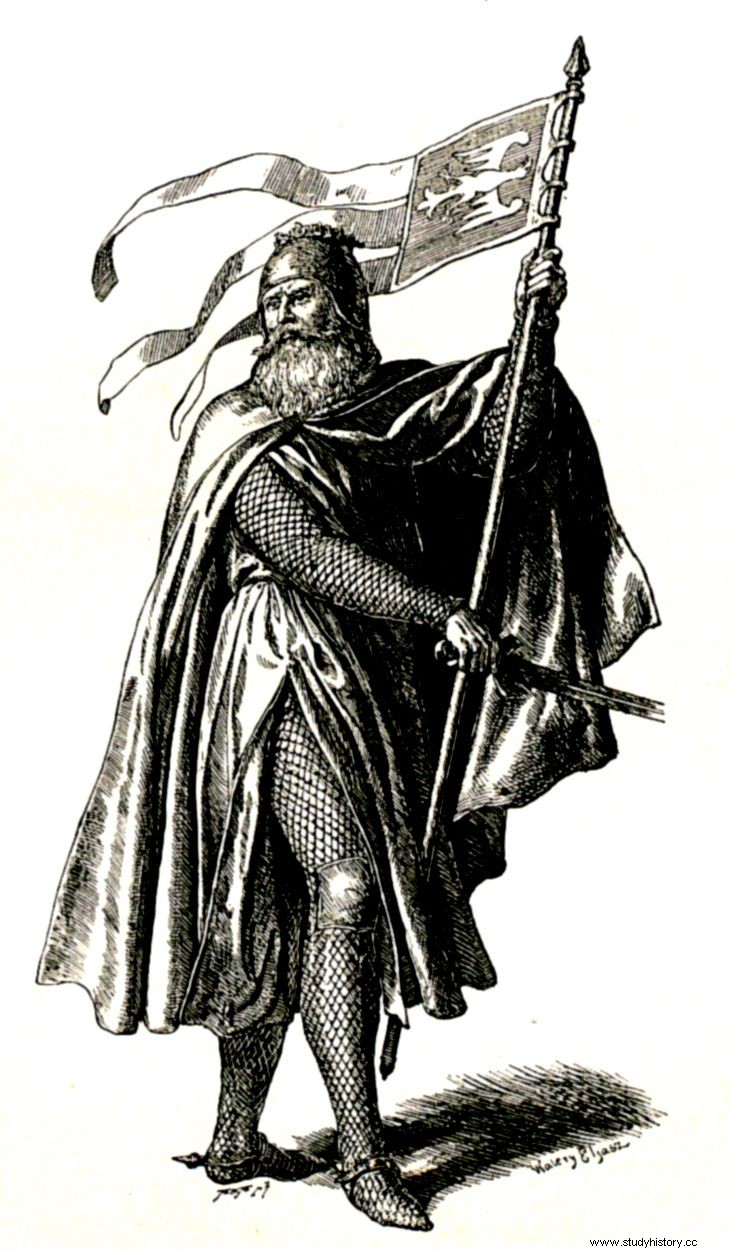
Even during the war expeditions of Bolesław the Wrymouth, taking slaves was an everyday reality. In this drawing from 1893, we see how this ruler was imagined by Walery Eljasz-Radzikowski.
Piast concentration camps?
In the 10th century, part of the captured population was placed by the Piasts around their strongholds, and another part for sale. They most likely used methods similar to those used by the Czech brothers, who also traded in human beings on a large scale. According to Czech sources, abductees were put on iron collars around their necks and led like cattle on ropes. After the entire "export" contingent had been built up, people were tied to one long rope and chased under armed guard to distant slave markets.
It is possible that the organization of this practice was facilitated by special fortified camps, which were places of concentration of "goods". Several places that could play such a role have already been discovered in Poland. In the fortified settlement in Naszacowice on the Dunajec River in Lesser Poland, which covers several hectares of land, archaeologists have found surprisingly few remains of the inhabitants. Within the very long embankment, no traces of any seat of the local ruler have been found.
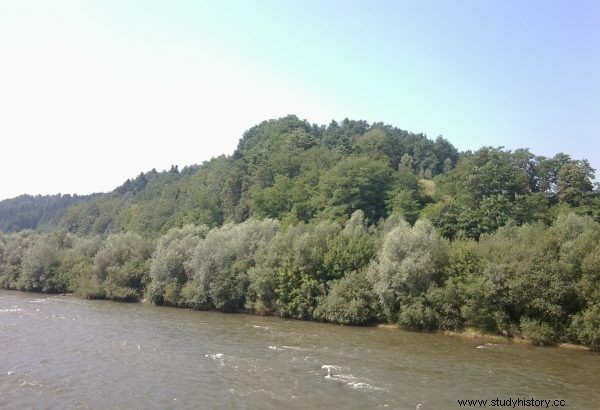
Castle hill in Naszacowice on the Dunajec River. Archaeologists speculate that the stronghold could have acted as a concentration camp for Piast slaves.
Scientists have been debating the role of this mysterious city in the 10th century. According to the archaeologist Zdzisław Skrok, it was simply a slave camp. The unfortunates could sleep in huts, and their overseers - in wooden buildings, traces of which were discovered by researchers. Stationed in the central part of the hillfort, the warriors had an overview of what was happening within the vast embankments.
We can only speculate about how prisoners were treated. They were certainly not abused on purpose, because the warriors wanted to deliver them to their buyers in good condition. Rapes against young, more seductive captives and bloody deals with unfortunates trying to rebel probably happened.
Also Marek Jankowiak recognizes Naszacowice as a slave camp, "periodically filled with prisoners on the way to the slave market, most likely in Prague" , the largest human trafficking center in our part of Europe. Similar to Naszacowice, large, empty castles are found in southern Poland, the Czech Republic, Slovakia and western Ukraine, where the remains of gigantic fortresses of this type, covering an area of hundreds of hectares, have been discovered.
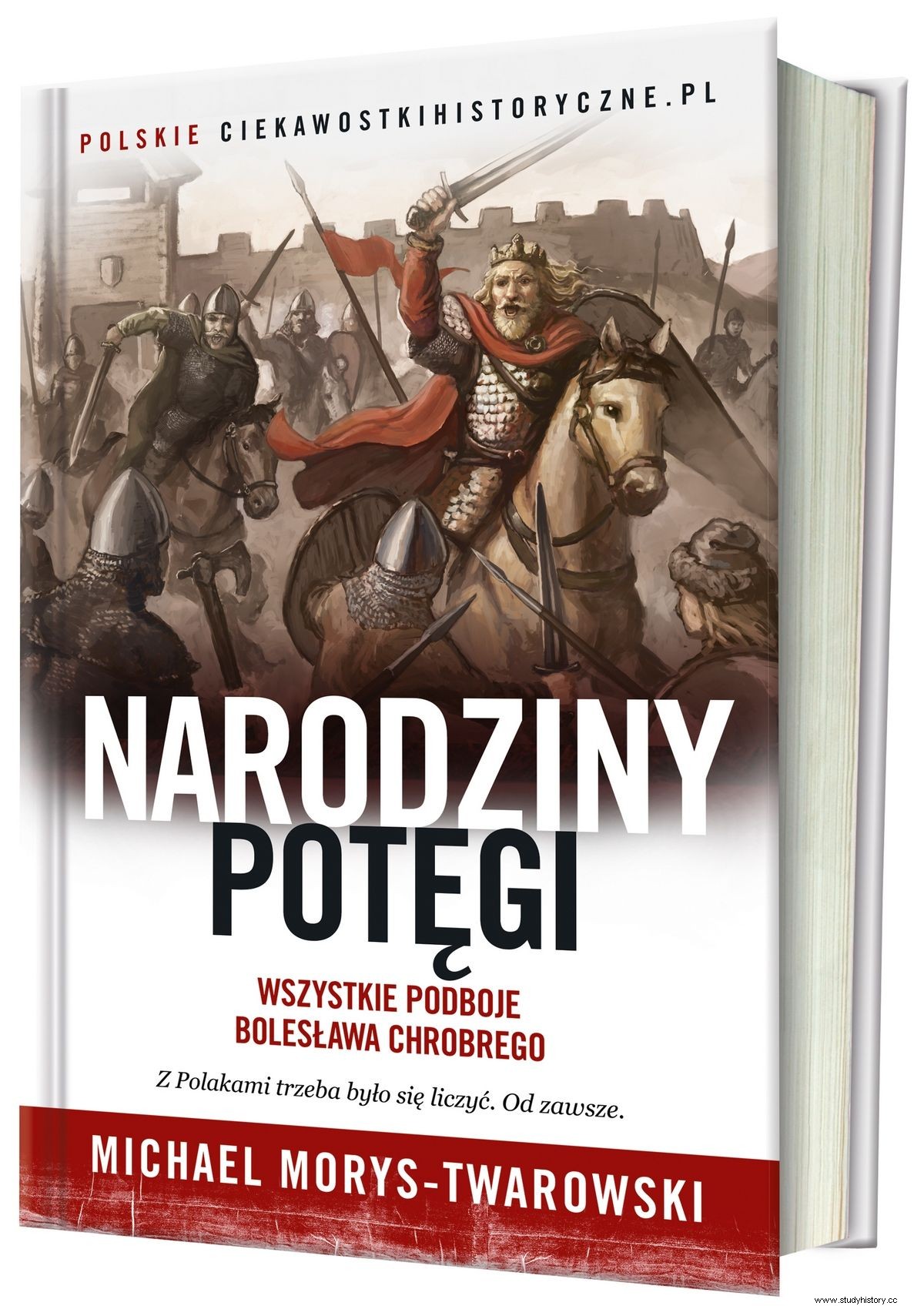
You can buy our newest book, "The Rise of a Power", now, for as much as 35% cheaper.
According to Jankowiak, all these castles were associated with the great slave market in the Czech capital. “They can be interpreted as the nodes of his supply system, which relies on long-distance land transport. The great caravans - the kind that Ibn Fadlan (Arab traveler - ed.) Joined on his way to Bulgar of 3,000 horses and 5,000 men - were perhaps the most cost-effective way of transporting slaves over hundreds of kilometers by road " - writes the historian in the book "Dirhams for slaves".
Dirty business and baptism
The intermediaries in the slave trade were, among others Jewish merchants. The earliest mentions of Mieszko I's country come from one of them, Ibrahim ibn Jakub. Ibrahim heard about the Duchy of Gniezno while in Prague. "They come from the city of Krakow, Rus and Slavs with goods (...), and they bring slaves, tin and various skins with them" - noted the merchant.
The great organizer of the human trade was the father-in-law of Mieszko I, the Czech prince Bolesław I Sroga. It is possible that the so-called The "baptism of Poland" in 966 and the marriage of Mieszko and Dobrawa were the result of the agreement between the Piast and Przemyślida regarding the slave trade, delivered en masse from the Vistula River to the Czech capital.
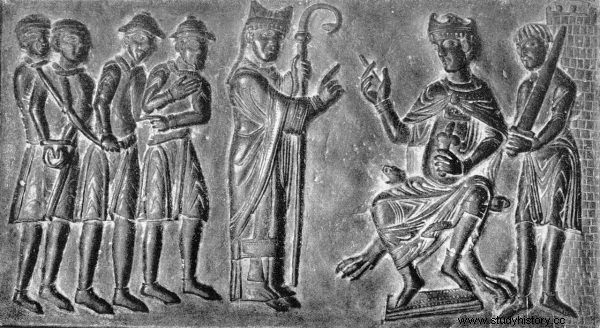
St. Wojciech. The illustration shows a scene from the door of the Gniezno cathedral showing the Prague bishop admonishing the Czech ruler Bolesław II to stop this practice.
A little later, the Prague bishop Wojciech criticized the captivity of Christians, but the rulers of the Slavic states of the time did not do anything about it. Christian slaves "a Jewish merchant bought for unfortunate gold, and so much so that the bishop could not buy them" - we read in the Life of St. Wojciech.
The captives sold in Prague were generally sent to Muslim Spain via Germany and France. For a time, the market in Verdun was a place where it was customary to castrate men destined to be eunuchs in Arab harems. Led under guard, the bound Slavs became a common sight on the western roads. So much so that it led to linguistic changes. The Latin word Sclavus, meaning Slav, began to mean slave. It was similar with the Arabic word Siqlab.
Another route of human trade led eastwards - to the markets in Bulgaria on the Kama and Itil in the Volga basin. As Ibn Fadlan wrote in the 20s of the 10th century, "goods" were transported there by boats, and during stops, young slaves were regularly raped by their owners, to the delight of the other merchants. Attractive girls were especially in demand at the eastern fairs. They went, like other slaves, mainly to the Caliphate of Baghdad, where wealthy Arabs purchased them for their harems.
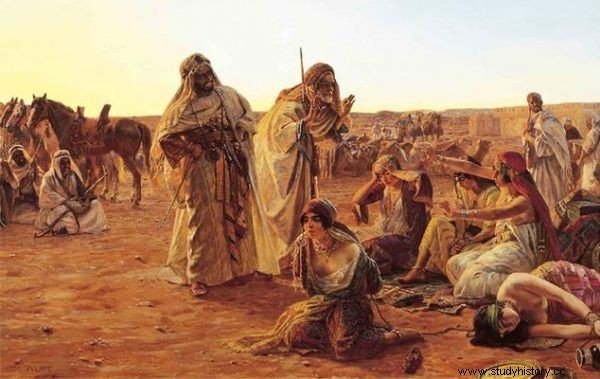
A painting by Otto Pilny depicting a Middle Eastern slave market. This is where, to a large extent, the people taken captive by the first Piasts were sent.
While in the East people paid for living goods with dirhams, in Prague, pieces of expensive fabric were used extensively as a means of payment. Of course, they have been lost irretrievably, so we will never fully know the scale of this trade.
Country for dirhams
By selling some of the captives and others by settling in their territory and exploiting their labor, the tribal warrior group grew rich and powerful. Its leader gained prestige and the means with which he could reward warriors, which allowed him to expand his armed team. “This was done by Siemomysł, son of Lestek, and Mieszko, son of Siemomysł. The dirhams they received for slaves allowed them to support a team of warriors. In the times of Mieszko, this team consisted of 3,000 people. Probably it consisted of both local and Scandinavian mercenaries "- emphasizes Morys-Twarowski in" The Birth of Power ".
The armed forces, growing in strength, could carry out activities on an ever greater scale. Of course, they came into conflict with rival tribal groups using the same strategy, which led to bloody settlements. The victors of these struggles, in control of ever-expanding territory, needed an organization that could keep it in check. In this way, the slave trade contributed to the formation of states, including the Polish one.
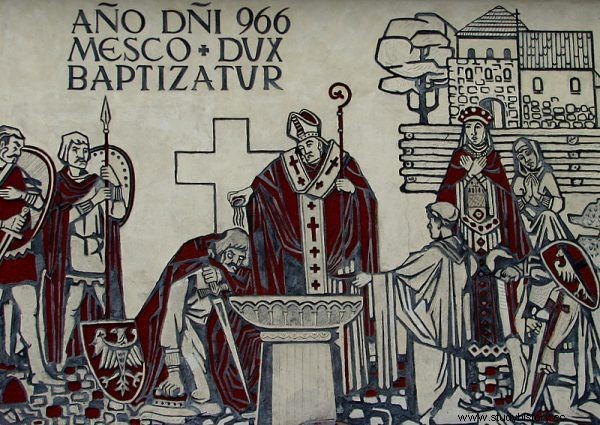
His baptism in 966 did not induce Mieszko I to stop the extremely lucrative human trafficking.
The adoption of Christianity in 966 did not induce the Piasts to quickly abandon their previous practices. The bishops whined and the rulers continued to do their job. As one of the German chroniclers enumerated, only in 1030 the Polans took away into captivity in the area between the Elbe and Sala 9065 Christ's followers.
At that time, however, the demand for "siqlabs" in Spain was already collapsing, which was caused by the crisis related to internal struggles, and then the collapse of the Caliphate of Cordoba. As a result of changes on the Iberian Peninsula and the growing influence of Christianity, the export of slaves from Polish territories gradually died out. But they were to play an important role in the socio-economic system of Piast Poland for a very long time. Even chronicles from the 13th century report about them!
***
A fascinating story about the beginnings of Poland. And about the great mighty who built the first great empire in the history of the Slavs - Bolesław the Brave. "The birth of power. All the conquests of Bolesław the Brave ”available at a discount on empik.com
Visit the Facebook profile of the patron of this series of articles:
